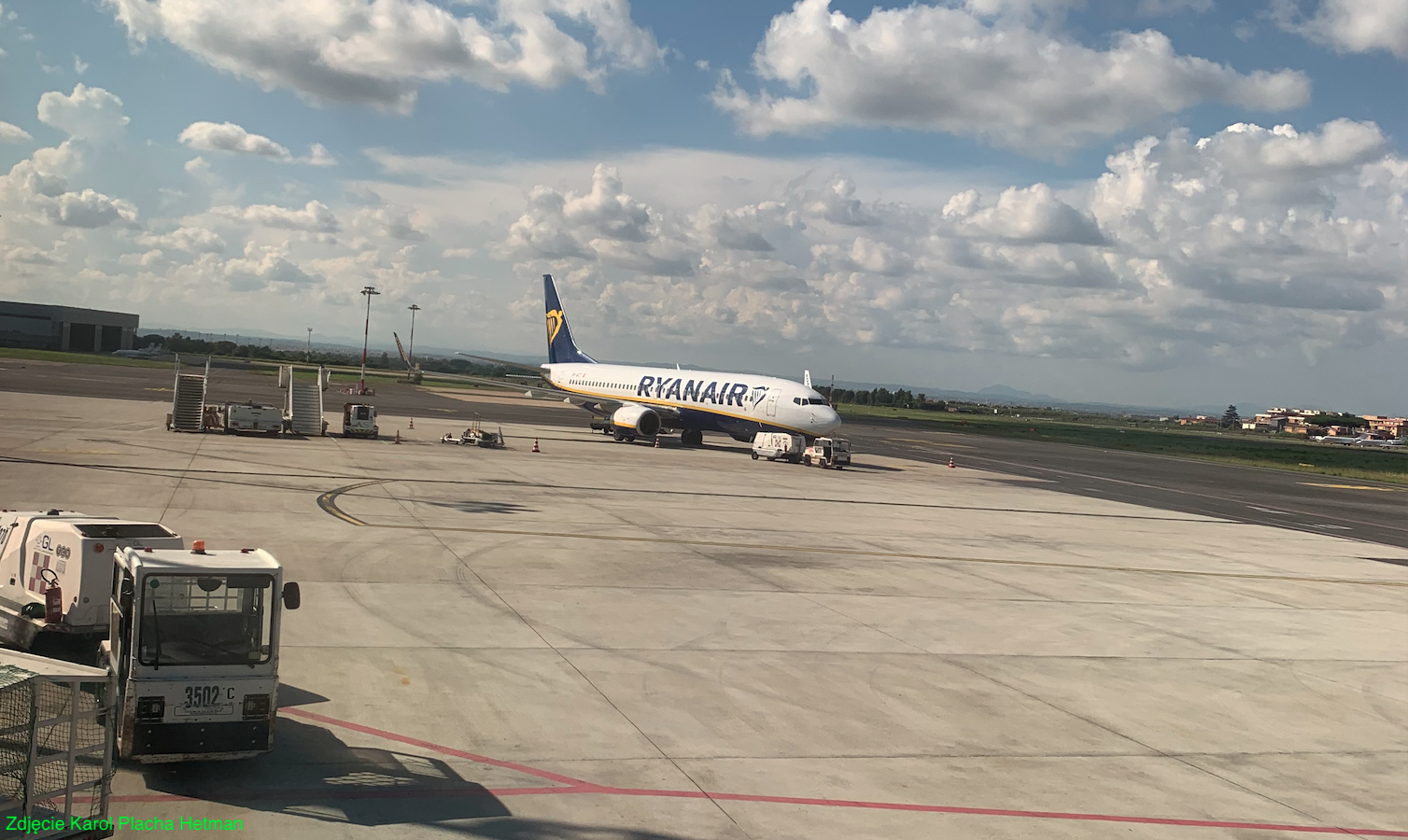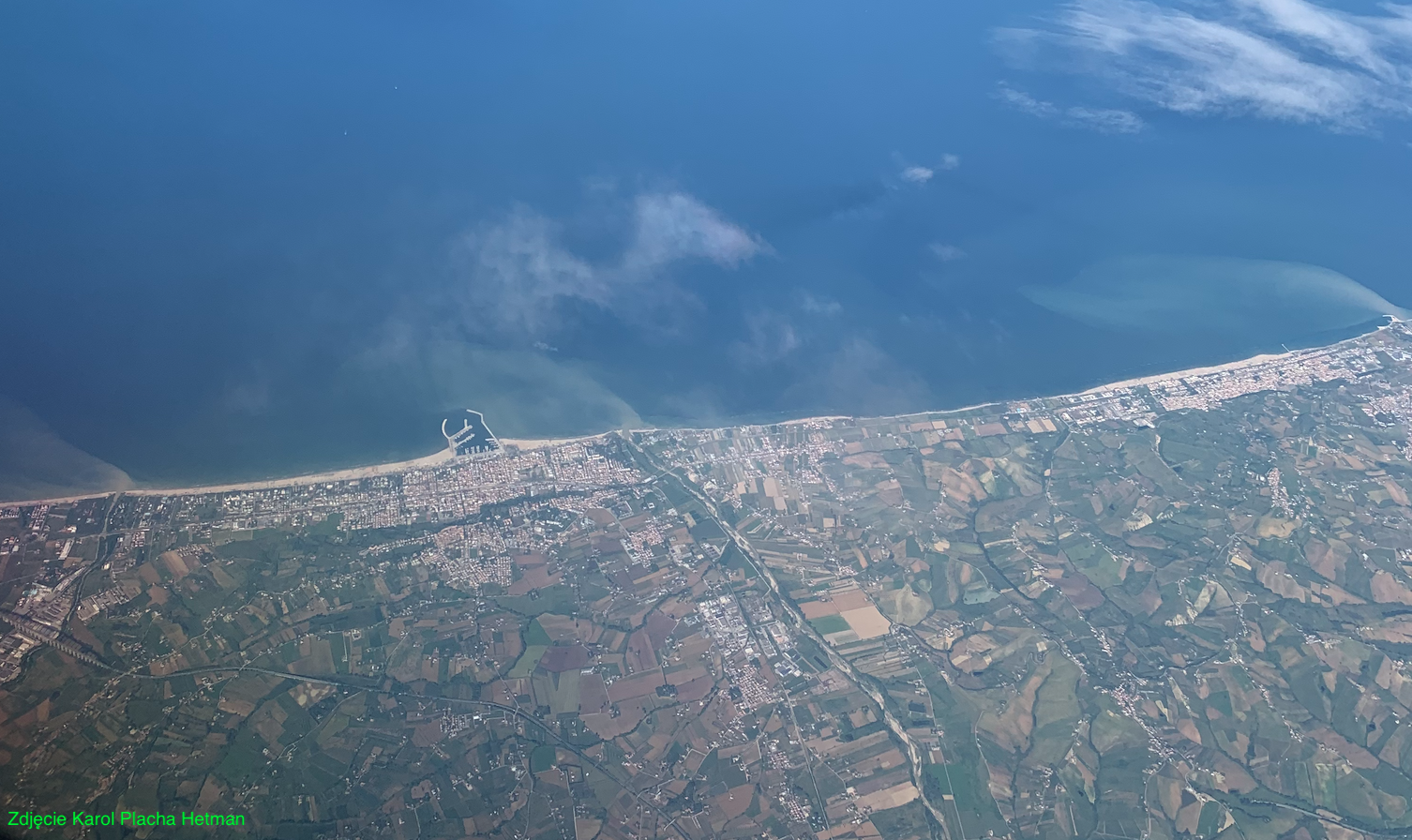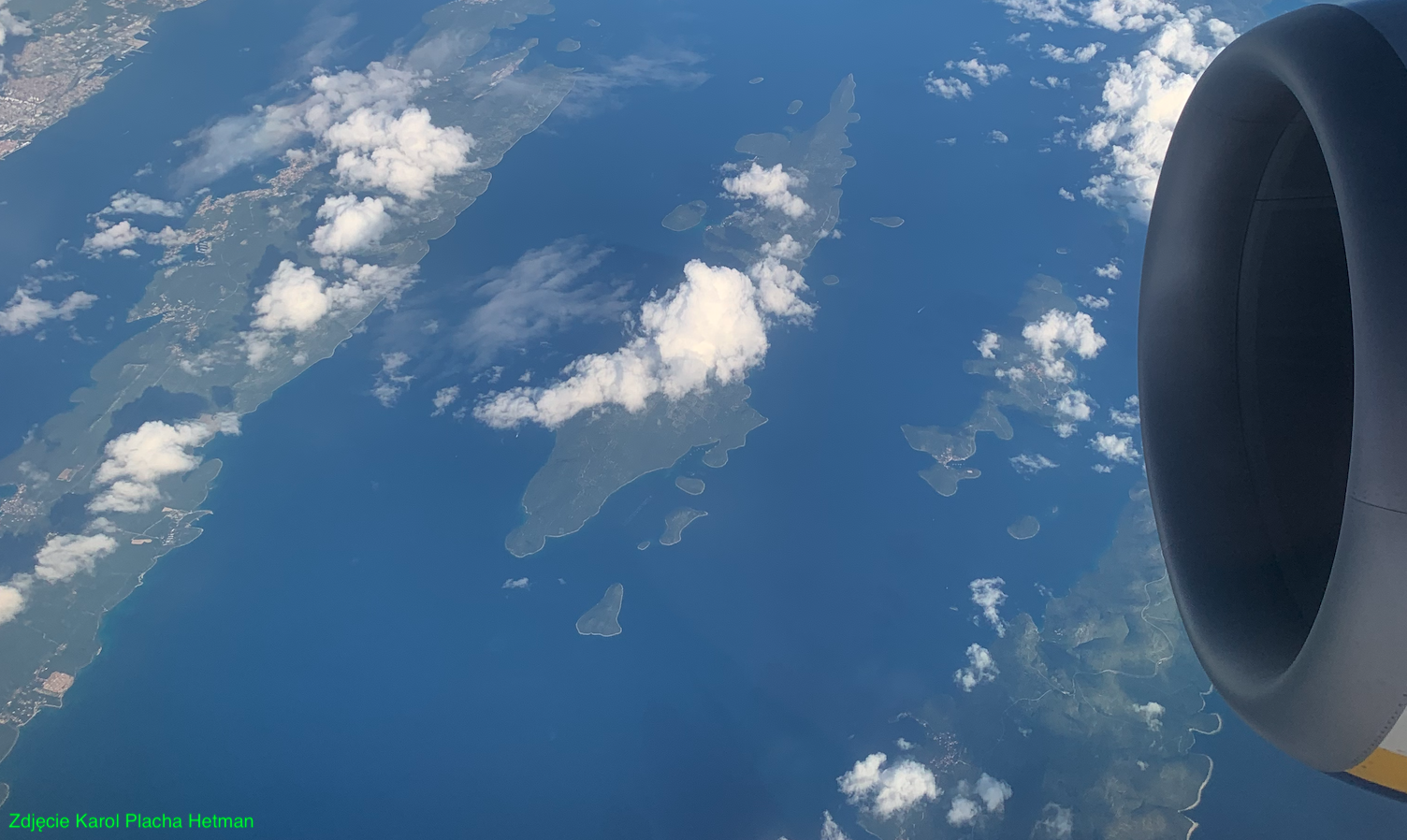Kraków 2023-06-12
Flight from Rome to Krakow. 2023.
On June 6, 2023, a flight took place on the CIA – KRK route, which was carried out by Ryanair. The cruise was performed with the popular Boeing B.737-800 aircraft, registration SP-RSA, operator BUZZ.
Rome airports.
Here a few words about airports in Rome. Currently (2023) Rome has two commercial airports. The first of them was built in the town of Ciampino near Rome, in the south-eastern direction, about 15 km from the center of Rome. The date of establishment of the airport can be assumed as 1918. The airport had military functions. But already in the 30s of the twentieth century, passenger traffic began to develop intensively on it. PLL LOT planes from Warsaw also flew here. A huge boom in passenger and freight transport took place just after the end of the Second World War. Ciampino airport benefited from its good location, on the route of North Africa and the Middle East and Western Europe (mainly France and Great Britain). The then propeller-driven planes did not have such a long range and had to use intermediate airports. Planes had to be refueled in Rome. The Ciampino Airport was famous when the British De Havilland Comet planes (the world’s first turbojet passenger planes) taking off from this airport suffered catastrophes. (Twice; January 10, 1954 and April 8, 1954).
The systematically increasing traffic at Ciampino Airport forced Italy to build a new Fiumicino Airport. Construction began in 1962 and it is now Italy’s largest airport with three terminals.
In the intention, the Italians planned the complete liquidation of Ciampino Airport. Nevertheless, the government aircraft of the Republic of Italy and the military naval aviation are based at Ciampino Airport. The latter perform maritime patrol functions and carry out SAR tasks. It was from this airport that Pope John Paul II and then Benedict XVI departed on the pilgrim trail. On the other hand, since 2003, so-called low-cost aviation has been developing intensively in Europe. The Irish company Ryanair has found one of its bases here. Thus, it is unlikely that Ciampino Airport will be closed in the coming years.
Basic data of Ciampino Airport (2023). Proper name – Giovan Battista Pastine. Civil-military airport. CIA (IATA organization), LIRA (ICAO organization) code. Coordinates: 41°47’57.7″N 12°35’41.77″E Altitude: 130 m above sea level The airport has one RWY with dimensions of 2,207 m x 47 m, in the direction of 15/33, with a concrete surface. In 2006, the airport handled 4,945,158 passengers, and in 2018, 5,839,737 passengers. In 2007, another departure pavilion was added.
Ciampino airport.
At CIA Airport, Ryanair passengers are checked in from Departure Hall A, where there are 8 gates. There is also pavilion "B" and a special pavilion "C". There is a standard duty-free shop between the security zone and the departure pavilion. Practically, the entire pavilion is filled with seats for travelers. There is of course a buffet and toilets. Due to the lack of space, there is no entertainment corner for children. Travel information is displayed on monitors and audio messages are provided. The advantage of the pavilion is the possibility of taking pictures of planes taking off and landing, along the entire length of the RWY. However, the photos are taken against the backdrop of colorful apartment blocks and a nearby train stop.
Despite the general opinion about Italy, check-in is done on time and very efficiently. The Italian staff is professional and attentive. After passing through the gate, we go outside the pavilion and wait for boarding the plane, we spend in the open air. In the event of rain, passengers are directed to corridors covered with blue polycarbonate. Fortunately, waiting in the open air is reduced to a minimum. It all depends on the arrival time of the plane on which we are to depart and the efficiency of leaving this plane by previous passengers. The Italians have these procedures well mastered. The flight times are arranged in such a way that there is a magnet for possible delays. For example; Ryanair estimates 120 minutes for the CIA – KRK flight, when the actual flight lasts about 90 minutes (from take-off to landing).
Because our plane was parked on the platform at pavilion "A", there was no need to transport passengers by platform buses. Boarding of 189 passengers takes about 5-6 minutes (through the front and rear doors). It takes longer for passengers to settle down in the seats, because you have to put the cabin suitcases (cabin luggage) in the storage compartments above the seats. Seats in a 3 x 3 arrangement. There is a window next to each seat by the side. Airplanes of this type, with one aisle, are called narrow-body. The largest of them take on board up to 230 passengers (1-class configuration). There are three types of passengers; The first passengers are only in hand luggage (one copy), which they put under the seat. The second group consists of passengers with two pieces of luggage. A small bag that they put under the seat and a cabin suitcase up to 10 kg, which is hidden in the compartments above the seats. The third group consists of passengers who checked in large luggage (up to 45 kg) at the ticket and baggage check-in. Airport staff puts their luggage in the trunk of the plane, which is under the floor of the passenger cabin. This trunk is accessible from the outside through a special hatch.
Push-Back vehicles are used at the CIA airport to push planes onto the taxiway. The aircraft’s main engines are started after the aircraft is pushed out. It’s about airport security. When the aircraft is parked on the platform, a small APU engine (turbine) operates, which supplies the aircraft with electricity and ventilates the passenger cabin. The plane taxis to take-off on its own power. At this point, the flight crew maintains radio contact with the air traffic control tower.
Boeing B.737-8AS aircraft, registration SP-RSA.
The family of Boeing B.737 aircraft is the most popular passenger aircraft in the world. By 2022, approximately 8,000 have been built. Currently, the B.737 MAX generation is being produced, in several fuselage lengths, with different maximum range and with engines that differ slightly in power. The Boeing concern’s portfolio of orders for the B.737 MAX aircraft amounts to over 2,000 copies.
Ryanair Boeing B.737-8AS aircraft, registration SP-RSA No. 44686 (5072), operator BUZZ. It was put into operation on September 9, 2014. Gross weight 79,010 kg, maximum speed 876 km/h, and cruising speed 840 km/h. Range with a load of over 4,000 km. The drive unit consists of two CFMI CFM56-7B26 fan motors with 2 x 121.4 kN thrust, with thrust reversers. The crew consists of two pilots and three cabin crew. On June 6, 2023, the aircraft made 6 flights from Krakow; Dortmund, Rome, Oslo. The aircraft was flown on August 27, 2014, registration N1786B in Renton and handed over to operation on September 9, 2014, to Ryanair with registration EI-FEE. In March 2018, the aircraft was transferred on paper to Ryanair Sun (Poland) with registration SP-RSA, and in October 2019, it was transferred on paper to BUZZ (Poland) with registration SP-RSA. The aircraft in Poland received HEX CODE – 48C220 (ICAO ID). One-class layout 189 seats.
In its history, the Boeing B.737-8AS aircraft registration SP-RSA had two incidents. On November 12, 2019, the aircraft registration number SP-RSA, was performing flight FR-6864 from Krakow (Poland) to Palermo (Italy), was climbing from the Krakow runway in the direction of 07, when the crew requested leveling at an altitude of 6,000 feet, due to a transmission problem. The crew worked through the associated checklists and decided to return to Krakow and landed safely back on runway 07, approximately 55 minutes after takeoff. The replacement Boeing 737-800, registration SP-RST, arrived in Palermo on flight FR-6866 with a 3-hour delay. The failure of the SP-RSA aircraft was removed by technicians from the Boeing concern.
Second incident. On January 21, 2021, SP-RSA flew flight FR-6329 from Sofia (Bulgaria) to Barcelona (Spain), where it landed on RWY 25L in Barcelona. After touchdown, in the crew cockpit, in front of the ship’s captain, a single crack appeared on the windshield. The glass was replaced on the same day and the aircraft returned to service.
Flight to Krakow. June 6, 2023.
The aircraft took off and taxied to RWY 15 at a speed of approximately 35 km/h. It stopped on a lantern in front of the runway so that another aircraft could land safely. When the crew got permission to take off, the machine started and, as usual, does not stop at the beginning of the runway, but takes off. Thanks to this, it takes minimal time on the runway and leaves it quickly. This is especially important at airports with one runway and heavy traffic, such as Ciampino and Balice airports.
Take-off in the direction of RWY 15. Take-off run takes about 45 seconds. (From the moment of departure to RYW until detachment from RYW). The plane leaves the ground at approximately 1,600 m RWY. And it goes up quickly. The airspace control procedures directed the plane to the Tyrrhenian Sea, i.e. to the right, and after about 10 km, being almost at cruising altitude, it set a course for Poland by turning left. The flight took place at the altitude of about 10,500 m. Already over Slovakia, the crew began to descend the flight ceiling. At the height of Nowy Targ, the crew changed the course to the north-west to approach the landing from the west side of the RWY in Krakow. The start time was 15:27. Landing was at 17:02. Flight time 1 h 35 min. Run 41 seconds. From the moment of contact of the landing gear with the RYW, to the taxiing speed of about 35 km/h. Landing was 12 minutes ahead of schedule.
Written by Karol Placha Hetman



